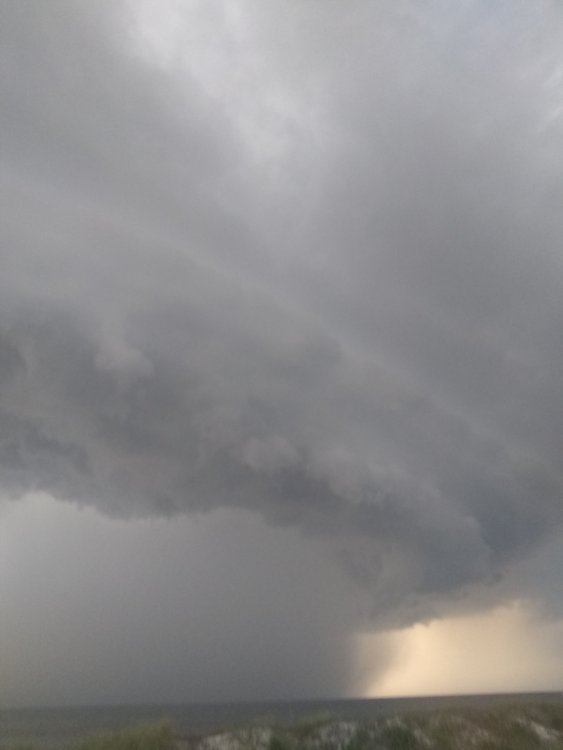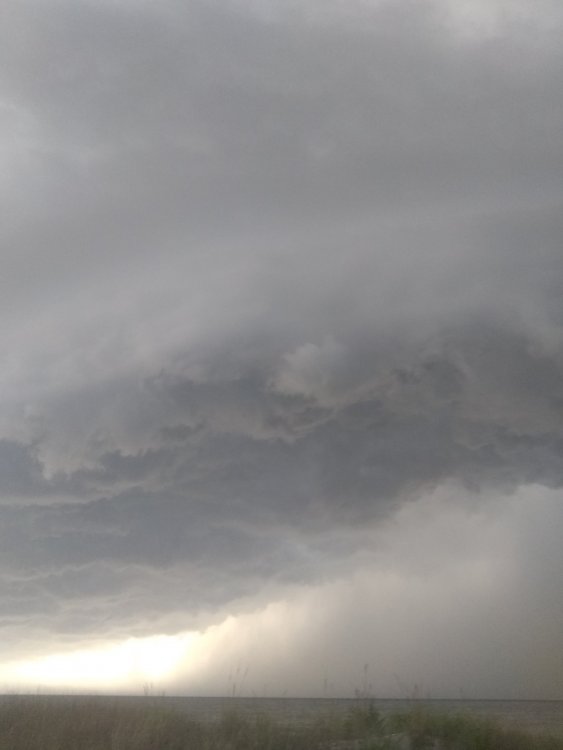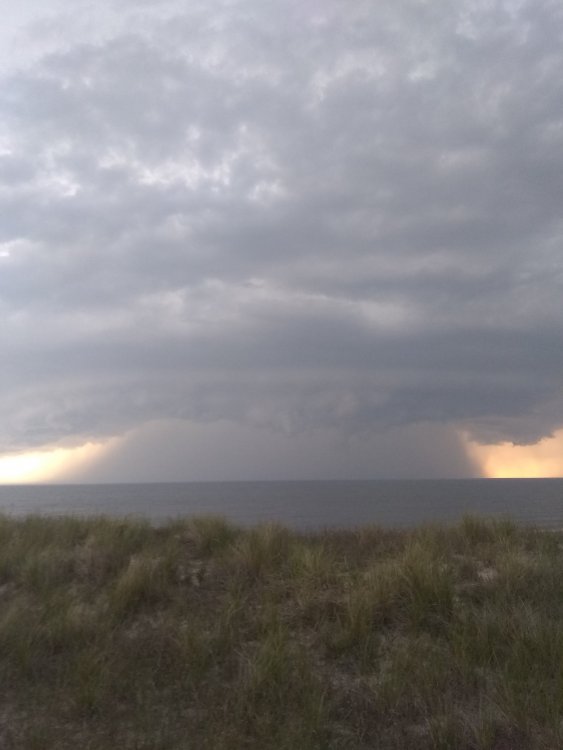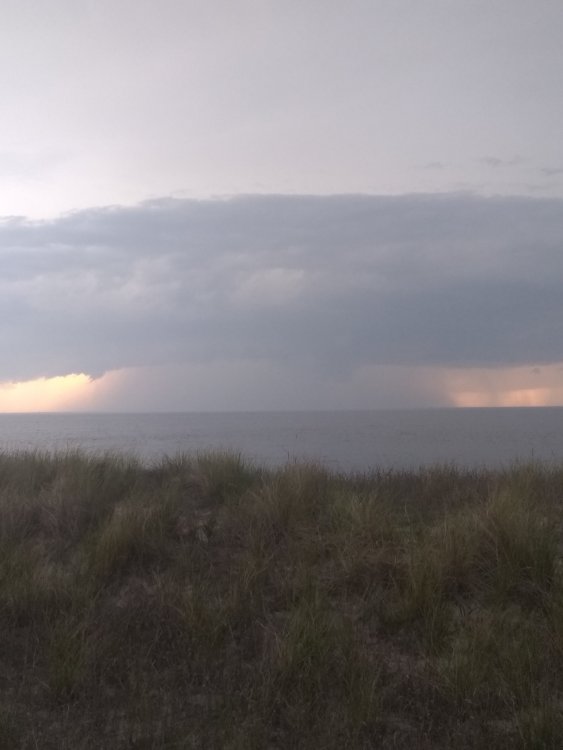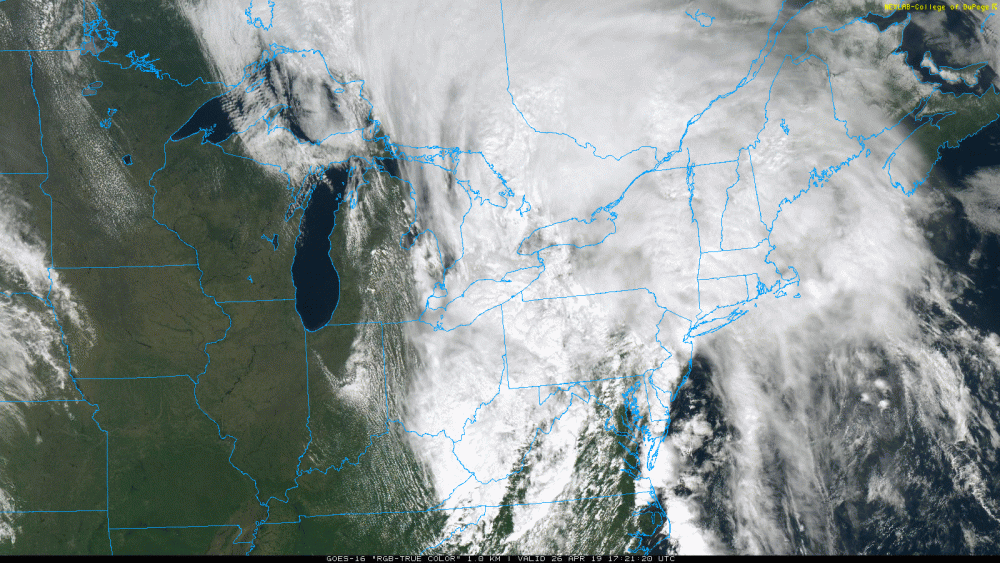-
Posts
1,732 -
Joined
-
Last visited
Content Type
Profiles
Blogs
Forums
American Weather
Media Demo
Store
Gallery
Everything posted by Vice-Regent
-
If it's inevitable then when it happens does not matter. Nobody payed attention to Paul Beckwith's three-legged bar stool.
-

2019 East & Central Pacific Season
Vice-Regent replied to Windspeed's topic in Tropical Headquarters
-

2019 East & Central Pacific Season
Vice-Regent replied to Windspeed's topic in Tropical Headquarters
Red meat beast in the East PAC. That's not very common. -
Hansen Et. al. The meltwater injector.
-
Is that 100% ice-free? 90% ice-free is regarded as largely the correct definition. Once that happens the rest is not far behind. The Arctic effectively turns into a sub-tropical ocean basin with persistent cloud cover in the winter. It is the primary mechanism for the tipping point.
-

2019 Mid-Atlantic Severe Wx - General Discussion
Vice-Regent replied to Kmlwx's topic in Mid Atlantic
Deck pics or it didn't happen.- 2,802 replies
-
- severe
- thunderstorms
- (and 4 more)
-

2019 Mid-Atlantic Severe Wx - General Discussion
Vice-Regent replied to Kmlwx's topic in Mid Atlantic
We have the money shot. Storm tracking on the coastal plain is incredible.- 2,802 replies
-
- severe
- thunderstorms
- (and 4 more)
-
-

2019 Mid-Atlantic Severe Wx - General Discussion
Vice-Regent replied to Kmlwx's topic in Mid Atlantic
Here are some pics from yesterday to keep us occupied while we wait. There was possibly a brief rain-wrapped waterspout. It is difficult to ascertain the peak intensity of this particular storm. Winds gusted to about 45mph on shore with visibility dropping to 1/8 mile. (Looking west towards Delaware 5/29/19)- 2,802 replies
-
- 3
-

-
- severe
- thunderstorms
- (and 4 more)
-

2019 Mid-Atlantic Severe Wx - General Discussion
Vice-Regent replied to Kmlwx's topic in Mid Atlantic
- 2,802 replies
-
- 3
-

-
- severe
- thunderstorms
- (and 4 more)
-

2019 Mid-Atlantic Severe Wx - General Discussion
Vice-Regent replied to Kmlwx's topic in Mid Atlantic
Our climo is turning into an Inland Gulf Coast type. Maybe Arkansas or Eastern Oklahoma where the main show shifts towards the warm season.- 2,802 replies
-
- severe
- thunderstorms
- (and 4 more)
-

2019 Mid-Atlantic Severe Wx - General Discussion
Vice-Regent replied to Kmlwx's topic in Mid Atlantic
It's always the blob. Looking for a June 2012 derecho but it never happens.- 2,802 replies
-
- severe
- thunderstorms
- (and 4 more)
-

2019 Mid-Atlantic Severe Wx - General Discussion
Vice-Regent replied to Kmlwx's topic in Mid Atlantic
91 at KWWD ... T-Storm probabilities upped to 70%. I am pumped. It's very rare to get back to back severe wx days locally. 3 days if you count yesterday.- 2,802 replies
-
- severe
- thunderstorms
- (and 4 more)
-

2019 Mid-Atlantic Severe Wx - General Discussion
Vice-Regent replied to Kmlwx's topic in Mid Atlantic
Looks promising. New QLCS forming west of the Blue Ridge?- 2,802 replies
-
- severe
- thunderstorms
- (and 4 more)
-

2019 Mid-Atlantic Severe Wx - General Discussion
Vice-Regent replied to Kmlwx's topic in Mid Atlantic
Roughly 0.80" or so in South Jerz. Much more to my south over Cape May Point.- 2,802 replies
-
- severe
- thunderstorms
- (and 4 more)
-

2019 Mid-Atlantic Severe Wx - General Discussion
Vice-Regent replied to Kmlwx's topic in Mid Atlantic
DC is the new Louisiana. You guys thought I was done just yet.- 2,802 replies
-
- severe
- thunderstorms
- (and 4 more)
-

2019 Mid-Atlantic Severe Wx - General Discussion
Vice-Regent replied to Kmlwx's topic in Mid Atlantic
Getting some sea-breeze interaction with the front-running stuff. Interesting event. It's got all of the signals of being a sub-historic severe wx outbreak.- 2,802 replies
-
- 1
-

-
- severe
- thunderstorms
- (and 4 more)
-
It's that cloud feedback. The ocean profile is the canary in the coal mine for climate change over land regions. I am skeptical of outdoor agriculture being tenable in CFA and DFA zones in the coming decades.
-

Southern MD / Lower Eastern Shore weather discussion
Vice-Regent replied to PrinceFrederickWx's topic in Mid Atlantic
How is it 32 at Salisbury and 39 in Georgetown? That is bizarre for sure. 31 at KWWD. Heavy snow burst but now dryslotted. -
Could be an artifact of a growing network of observations. Before 2000 ocean heat content was very poorly measured especially at depth.
-
Good luck to the world....
-
DCA: 12/24 BWI: 11/25 IAD: 11/5 RIC: 12/16 Tiebreaker: 3.5"
-
July 2018 Global Temperature Update To sign up for our monthly update of global temperature (Maps and Graphs), click here. Additional figures are on our global temperature web page. Heat waves seemed unusually widespread in July, as the media reported extreme heat in Europe, the Middle East, northern Africa, Japan and western United States. Extreme heat contributed to extensive wildfires in the western United States, Greece and Sweden, with fire extending into the Arctic Circle. The left map is the global distribution of temperature anomalies with our usual 1200 km smoothing; the right map has 250 km smoothing and uses only meteorological stations (no sea surface temperatures). Area-weighted warming over land (1.14°C) is 1.5 times larger than global warming (0.78°C), consistent with data for the past century (see graphs at http://www.columbia.edu/~mhs119/Temperature/T_moreFigs/). Globally July 2018 was the third warmest July since reliable measurements began in 1880, 0.78°C warmer than the 1951-1980 mean. The warmest Julys, in 2016 and 2017, were 0.82°C and 0.81°C, respectively. July 2018 temperature was +1.06°C relative to the 1880-1920 base period, where the latter provides our best estimate of pre-industrial global temperature. Continue reading: http://www.columbia.edu/~mhs119/Temperature/Emails/July2018.pdf


